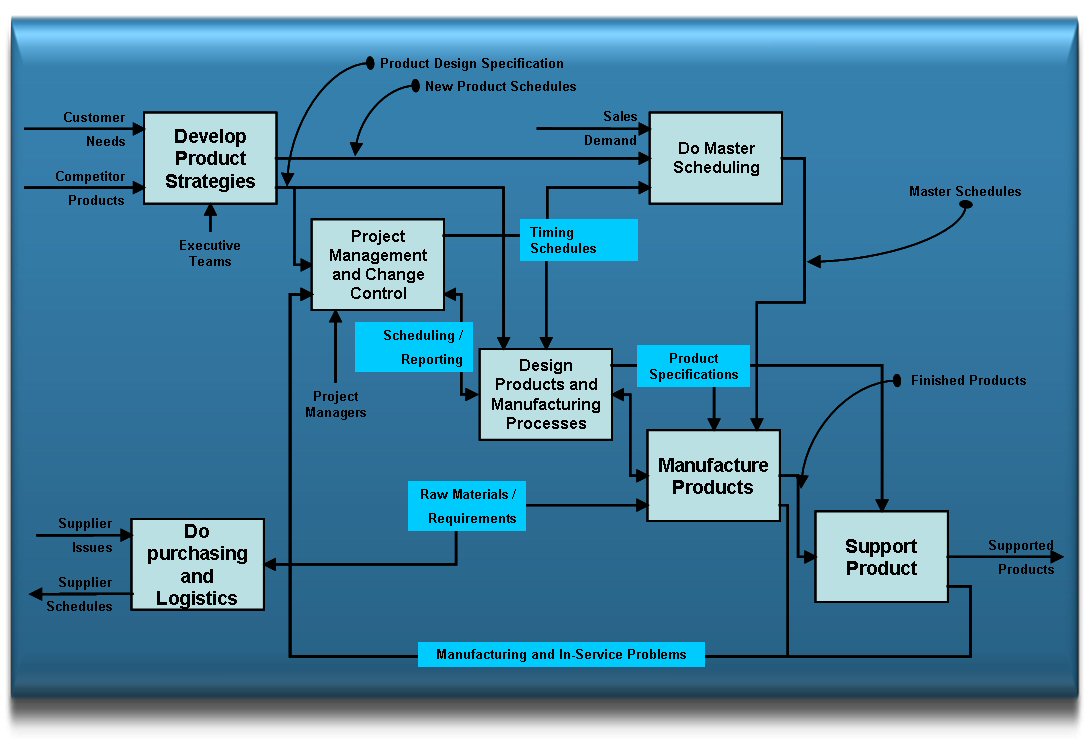3.04 - The Product Introduction Process Redesign
Marketing to Manufacturing – Concurrent Engineering
By using a clearly defined, structured approach the New Product Introduction Process (NPI or PIP) can be considerably enhanced to give companies significant gains in this critical area. These include and ability to handle:-
- Dramatic increases in New Product Introduction rates
- Shortened product life-cycles
Lateness to market means major loss in income and market share. Typical targets should be to reduce the introduction time by 25-50% and produce 15% more products with 25% less resource.
Traditional organisational approaches cannot meet modern business requirements. They break NPI process across many specialist functional departments with poor communications, lack of ownership, excessive complexity and considerable non-value added (NVA) activities.
World class competitiveness requires fundamental change. The traditional approach must be replaced by team structures. Clear ownership and integrated control of the NPI process is necessary. Manufacturing companies need expert help to introduce the new methodology.
Important Requirements
- To reduce the lead time of the overall NPI process
- To improve its reliability and quality of performance
- To ensure the process consistently delivers quality products at low cost
Concurrent Engineering (or Simultaneous Engineering)
The whole process should be seen as a continuous entity and managed by a project manager in a simultaneous engineering style. The project team must consider everything from marketing, through design for function, design for manufacture, the manufacturing system(s) design and design to target cost.
There are two steps:-
- Introduce a new, simplified, low NVA organisational approach based on multi-disciplinary teams and matrix management method.
- Apply techniques to make teams more effective and integrate their cross-functional knowledge, for example:-
- Quality Function Deployment (QFD),
- Failure Mode Effect Analysis (FMEA),
- Taguchi,
- Shainin,
- Design for Assembly (DFA),
- Design for Manufacture (DFM),
- Manufacturing Systems Design,
- Simulation,
- Engineering Change Control,
- Problem Management,
- Project Management etc.
The key elements being:-
- Introduce a new natural group organising practice step by step and eliminate all wasteful activity
- Simultaneously centralise communications within the NPI process by utilising a flexible multi-team project management software package reconfigured step by step to maintain order, as new organisational practices are introduced. This is process centred computing : not departmental based computing which only increases fragmentation and complexity
- Train teams in new techniques and methodologies
- Support the techniques with relevant and integrated applications software modules to provide support for all members of the project team
- Apply Total Quality Continuous Improvement Methodologies
New Product Introduction Process

Additional Information
Supporting technologies for the New Product Introduction (NPI) process are being developed at a rapid rate. They require constant attention to acquire appropriate tools that will provide improvements in Quality, Time-to-Market and Product Cost reductions.